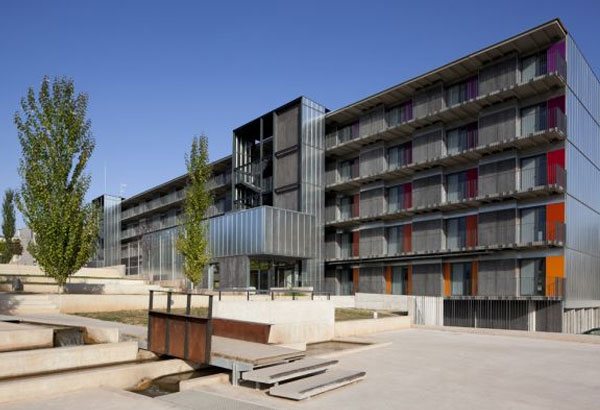CompactHabit, a pioneer in housing industrialization, expands their scope to the entire Iberian Peninsula
5 October, 2011
In September three university student housing buildings were opened in Girona, Sant Cugat and Manresa, they were constructed with the eMii system developed using technology patented by Compact Habit.
Compact Habit, a company that manufactures industrialized modules and in recent months has become one of the leading figures in the construction sector has decided to expand their scope to the entire Iberian peninsula. Until now projects carried out in housing, health care facilities and tourist resorts have been concentrated in Catalonia, where the Compact Habit patented construction system has received widespread acceptance because it lets a building be put up in a few days using industrialized modules and achieves high levels of economic and environmental efficiency.
Over this past month three buildings have started operation as university student residence halls in Girona, Sant Cugat and Manresa, which were constructed using important sustainability values with up to a 33% reduction in CO2 emissions. These values let the Sant Cugat residence hall receive the Minergie standard, a Swiss energy certification that rewards sustainability and reduction of environmental impact. Also, the company has a building period that is reduced by up to 75% in relation to a traditional construction system.
Environmental criteria are present throughout the entire building construction process, from the initial phase to the last day of life cycle, deconstruction and possible placement in a different location. The facility integrates a micro-cogeneration system that lets energy consumption in each of its housing units be controlled at all times. All rooms are positioned considering reduction of energy consumption and to facilitate cross ventilation. Saving water is taken very seriously into consideration in the construction phase and building usage.
Therefore, the building has tanks to store rainwater which is reused to water green areas; it also has faucets with water-saving mechanisms. Furthermore, the individual insulation system of modules gives them spectacular energy savings, which an external report requested by the company determined at 33%
